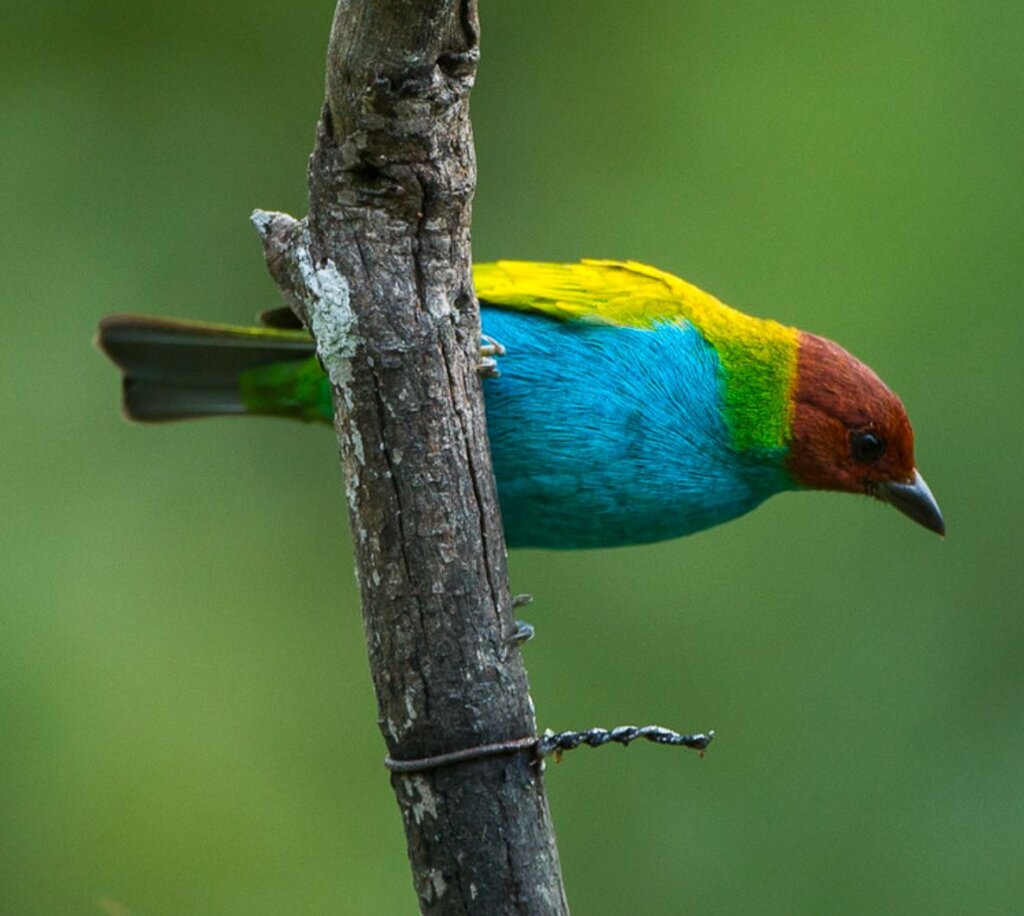A stunning bird to put it mildly, mostly green with a red-head, some populations even have electric blue upperparts and underparts!

Meet the Bay-Headed Tanager
The bay-headed tanager (Tangara gyrola) is a medium-sized passerine bird measuring about 14 cm in length and weighing in at 19.5 grams There are around nine sub-subspecies of this bird with considerable plumage variations throughout. The nominate species is mainly green except for a chestnut-red head, blue belly, and a thin gold collar on, behind the neck.

Males and females tend to look very much alike. Although it is thought identification can be made by the shape of the head.

The male is said to have a flat head, while the hen has a more rounded head. Juvenile birds have duller plumage and chestnut flecked heads.
These birds are native to, and resident in Costa Rica, Panama, and South America south to Ecuador, Bolivia and southern Brazil, and Trinidad.

Bay-headed tanagers are found mostly high up in trees in forest areas, especially on hills, in the canopy, and along the edges of forests, as well as in adjacent clearings with large trees.
These birds feed mainly on fruit, but they will also dine on small insects, which it catches close to the foliage.
Bay-headed tanagers build a bulky, cup nest in a tree, into which up to two brown-blotched white eggs are laid. The female incubates the eggs for 13-14 days before hatching, with another 15-16 days before the chicks fledged.
The global population size of this species has not been quantified, but it is believed to be large as these birds are described as ‘frequent’ in at least parts of their range.